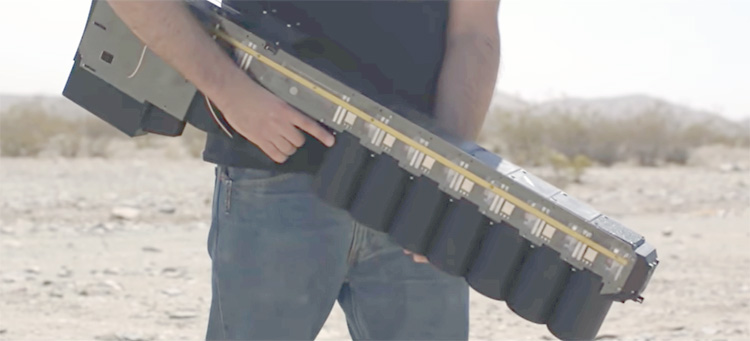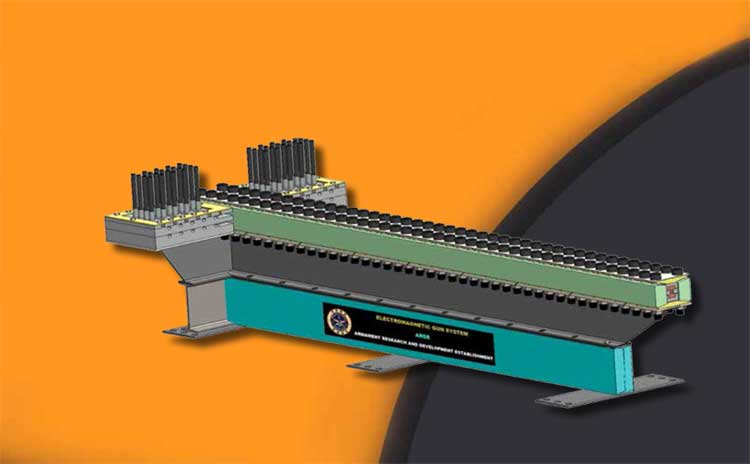INDIAN ARMED FORCES CHIEFS ON OUR RELENTLESS AND FOCUSED PUBLISHING EFFORTS

The insightful articles, inspiring narrations and analytical perspectives presented by the Editorial Team, establish an alluring connect with the reader. My compliments and best wishes to SP Guide Publications.

"Over the past 60 years, the growth of SP Guide Publications has mirrored the rising stature of Indian Navy. Its well-researched and informative magazines on Defence and Aerospace sector have served to shape an educated opinion of our military personnel, policy makers and the public alike. I wish SP's Publication team continued success, fair winds and following seas in all future endeavour!"

Since, its inception in 1964, SP Guide Publications has consistently demonstrated commitment to high-quality journalism in the aerospace and defence sectors, earning a well-deserved reputation as Asia's largest media house in this domain. I wish SP Guide Publications continued success in its pursuit of excellence.
- Operation Sindoor: Resolute yet Restrained
- India’s Operation Sindoor Sends a Clear Message to Terror and the World – ‘ZERO TOLERANCE’
- Japan and India set forth a defence cooperation consultancy framework, talks on tank and jet engines
- Terrorist Attack in Pahalgam in Kashmir: Unfolding a long surgical war against PAK
- Lt General Pratik Sharma takes over Command of Indian Army's Northern Command
Indigenous Railgun
Pioneering the Future of Military Technology with Railguns and Laser Weapons
 |
The Author is Former Director General of Information Systems and A Special Forces Veteran, Indian Army |

Electromagnetic (EM) railguns were first conceived in France during World War I. A railgun uses electricity flowing between two parallel conductors to shoot a non-explosive projectile at high speeds over long distances. The velocity results in such a powerful impact that explosives are not needed to cause the damage. Railguns have the proven capability to accelerate masses of several kg to velocities in excess of 2 km/s. Therefore, railguns are good accelerators for military applications since they can reach velocities in excess of what explosively driven guns can achieve. In the military domain, masses from 0.1 kg up to several kg need to be accelerated to velocities in between 2 km/s to 3 km/s.
Projectile accelerates in a conventional gun barrel due to propellant burning in the gun chamber. But there is a limit to how much propellant can be filled in the chamber of a gun. A gun requires a larger chamber volume to accommodate a higher amount of propellant resulting in reduction of pressure. The maximum velocity with which the gases can accelerate the projectiles is a function of the speed of sound in the gas. Because of the potentially higher velocity of a railgun-launched projectile, its force may be much greater than conventionally launched projectiles of the same mass. The absence of explosive propellants or warheads to store and handle, as well as the low cost of projectiles compared to conventional weaponry are also advantageous.
China's successful Railgun test signals a potential game-changer in modern warfare
China commenced developing a railgun in 2011 and its railgun trials began in 2014. In February 2018, China successfully test-fired its railgun prototype at sea on the Type 172III Haiyang Shan landing ship test-bed; using a 25 kg projectile and hitting a target at a distance of 25 km at a velocity of 2,575 metre per second. In January 2022, Chinese researchers claimed to be undertaking innovative solutions like applying liquid metal and special coating on the EM rails to reduce damage from repeated coatings, and unlike the US models their designs have unique features like absence of an extra muzzle device to reduce electric flashes. The US intelligence had predicted in June 2018 that China will have the world's most powerful gun ready for war by 2025. However, China's successful test firing at sea in February 2018 indicates that Beijing may be able to do so in an earlier timeframe.
In February 2022, media reported that China is stepping up its railgun trials and is potentially looking at naval, land and small arms applications since such kinetic weapons use hypersonic projectile velocities to hit targets instead of explosives. Compared to conventional powder guns, railguns can propel projectiles up to seven times the speed of sound and up to 10 times the range of traditional guns.
India's DRDO achieves breakthrough with 10MJ indigenously developed Railgun
It is believed that a railgun projectile travelling on hypersonic velocity would be more effective than a short-range ballistic missile (SRBM) or anti-ship missile because it would be nearly impossible to shoot it down and has the ability to penetrate the latest armour materials. At the same time, the technology is still facing challenges like high energy requirements and premature wearing of EM rails due to excessive heat generation, which reduces the lifespan and accuracy of the weapon.

After spending some 15 years and $500 million in developing a railgun for destroyers, the US Navy abandoned the idea in 2021 and instead opted for laser weapons. However, the railgun concept is apparently not dead in the US and research on railguns may be continuing. This is indicative from news reports of April 2023 that Japan's Ministry of Defense is looking to partner with the US on a railgun programme that could be used to counter hypersonic weapons. Shigenori Mishima, Chief Technology Officer of the Acquisition, Technology and Logistics Agency of the Japanese Ministry of Defense has said that railgun is one of the military's top research and development priorities. He further indicated the possibility of US defence contractors joining the programme. Japan's urgency is obvious with China's aggressive designs and considerable hypersonic capability that would be augmented further with railguns.
Private firm Kalyani Group joins the race in Railgun Technology advancements
In 1994, the Armament Research and Development Establishment (ARDE) under the Defence and Research Development Organisation (DRDO) of India had developed a railgun with muzzle energies of 240 Kilojoules, utilising a low inductance capacitor bank operating at 5 Kilovolt power, capable of launching projectiles weighing 3 to 3.5 grammes at a velocity of over 2 km per second.
Subsequent news reports of October 2022 stated that the ARDE-DRDO has successfully developed a 10MJ (megajoules) EM Railgun indigenously. The report further said that further development of up to 100MJ will be carried out at a dedicated infrastructure facility 'CEMaLT' which is currently under construction. Based on the know-how gained after the successful completion of Technology Demonstration (TD) project, the configuration and design methodology can be extended to achieve higher speed, range, and lethality in futuristic railgun.
Concurrently, there is news that India's Kalyani group has completed the design of the first EM Railgun (EMRG) which will be the first railgun developed by a private firm. The design phase of this system by Kalyani started in 2018 and technology absorption and designing phase is now complete. Thus, the DRDO and Kalyani are both developing the railgun simultaneously, which is good. However, we need to focus on accelerating the development given Chinese intentions and capabilities.
Interestingly, American technology company Arcflash Labs (LLC), founded in 2017, is selling a hand-held railgun for $3,750, which can be useful for guarding borders as well as unconventional tasks. Akin to China, we must develop railgun weapons for naval, land and small arms applications. In fact, we must go full steam in developing both railguns and laser weapons.





